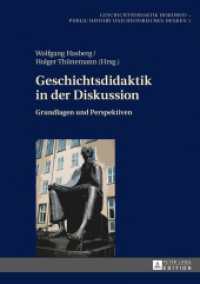Full Description
An engrossing history of the century that transformed our knowledge of the body's inner senses
The years between 1833 and 1945 fundamentally transformed science's understanding of the body's inner senses, revolutionizing fields like philosophy, the social sciences, and cognitive science. In How We Became Sensorimotor, Mark Paterson provides a systematic account of this transformative period, while also demonstrating its substantial implications for current explorations into phenomenology, embodied consciousness, the extended mind, and theories of the sensorimotor, the body, and embodiment.
Each chapter of How We Became Sensorimotor takes a particular sense and historicizes its formation by means of recent scientific studies, case studies, or coverage in the media. Ranging among a diverse array of sensations, including balance, fatigue, pain, the "muscle sense," and what Maurice Merleau-Ponty termed "motricity," Paterson's analysis moves outward from the familiar confines of the laboratory to those of the industrial world and even to wild animals and their habitats. He uncovers important stories, such as how forgotten pain-measurement schemes transformed criminology, or how Penfield's outmoded concepts of the sensory and motor homunculi of the brain still mar psychology textbooks.
Complete with original archival research featuring illustrations and correspondence, How We Became Sensorimotor shows how the shifting and sometimes contested historical background to our understandings of the senses are being extended even today.
Contents
Contents
Introduction: From Nineteenth-Century Physiology to Twenty-First-Century Neuroprosthesis
1. The "Muscle Sense" and the Motor Cortex: A Cartography of Bodily Interiority
2. On Pain as a Distinct Sensation: Weber, Fechner, and the Instruments of Measure
3. The Oculomotor: Labyrinths, Vestibules, and Chambers
4. "The Neuro-motor Unconscious": Étienne-Jules Marey, Eadweard Muybridge, and Motion Capture
5. Fatigue: Jules Amar, Angelo Mosso, and Physiological Observations of Industrial Labor, 1891-1947
6. Motricity: Merleau-Ponty and the Neurophysiology of Movement
Acknowledgments
Notes
Bibliography
Index






